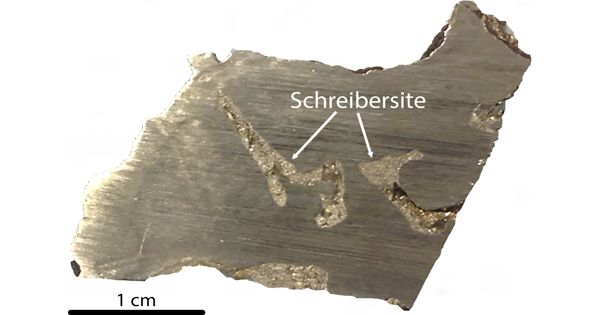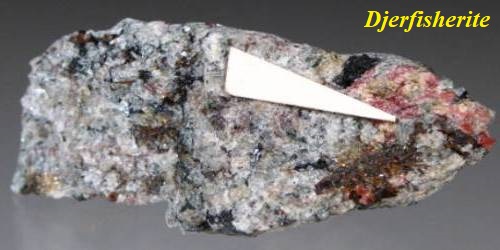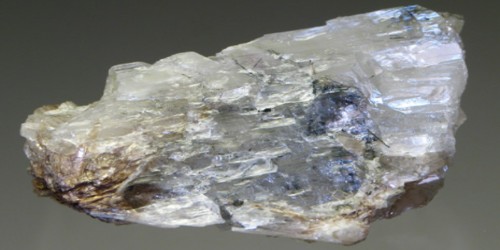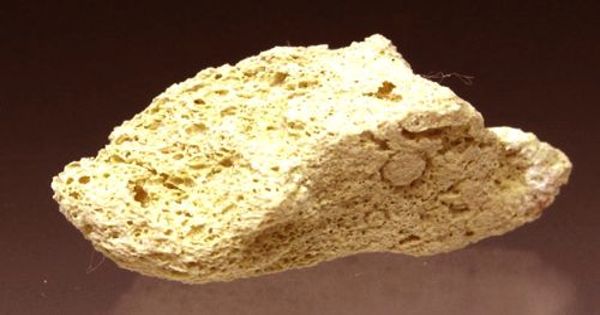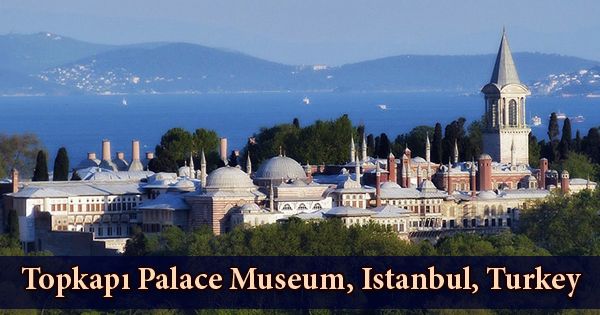Schreibersite is a mineral consisting of a phosphide of iron and nickel and occurring in meteorites. It is generally a rare iron-nickel phosphide mineral, (Fe, Ni)3P, though common in iron-nickel meteorites. The mineral schreibersite provides a reactive source of phosphorus capable of forming phosphorylated molecules. In iron meteorites, it often is found in the form of plates and as shells around nodules of troilite. The only known occurrence of the mineral on Earth is located on Disko Island in Greenland.
Another name used for the mineral is rhabdite. It forms tetragonal crystals with perfect 001 cleavage. These molecules may have been an important component of prebiotic chemistry, allowing their build-up and eventual commencement of autopoiesis. It was named after the Austrian scientist Carl Franz Anton Ritter von Schreibers (1775–1852), who was one of the first to describe it from iron meteorites. He earned his medical doctorate from Vienna in 1798 but also studied botany, mineralogy, and zoology at the University.
General information
- Category: Phosphide mineral
- Meteorite mineral
- Formula: (repeating unit) (Fe,Ni)3P
- Crystal system: Tetragonal
- Crystal class: Disphenoidal (4)
- Color: Silver-white to tin-white, tarnishes brass-yellow or brown.
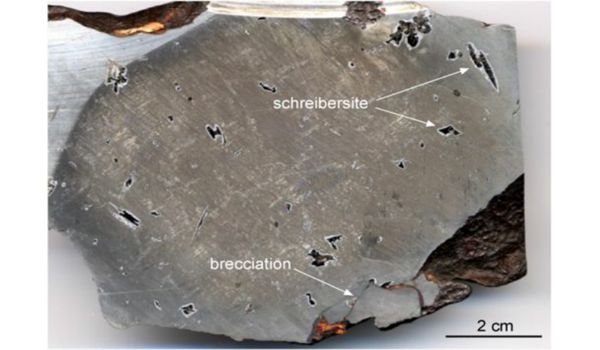
Properties
Rodlike schreibersite is called rhabdite and was once thought to be a separate mineral. Its color ranges from bronze to brass yellow to silver white. It has a density of 7.5 and a hardness of 6.5 – 7. The crystals of both varieties belong to the tetragonal system. It is opaque with a metallic luster and a dark gray streak. It is a tetragonal iron nickel phosphide mineral most commonly found in meteorites.
- Crystal habit: Rarely in crystals, hoppered, plates, tablets, rods or needles
- Cleavage: {001} perfect, {010} indistinct, {110} indistinct
- Tenacity: Very brittle
- Mohs scale hardness: 6.5–7
- Luster: Brilliant metallic
- Streak: Dark gray
- Diaphaneity: Opaque
- Specific gravity: 7.0–7.3
- Optical properties: Uniaxial
Occurrences
Schreibersite is a mineral, iron-nickel phosphide, found only in meteorites. It is reported from the Magura Meteorite, Arva-(present name – Orava), Slovak Republic; the Sikhote-Alin Meteorite in eastern Russia; the São Julião de Moreira Meteorite, Viana do Castelo, Portugal; the Gebel Kamil (meteorite) in Egypt; and numerous other locations including the Moon.
Information Source:
